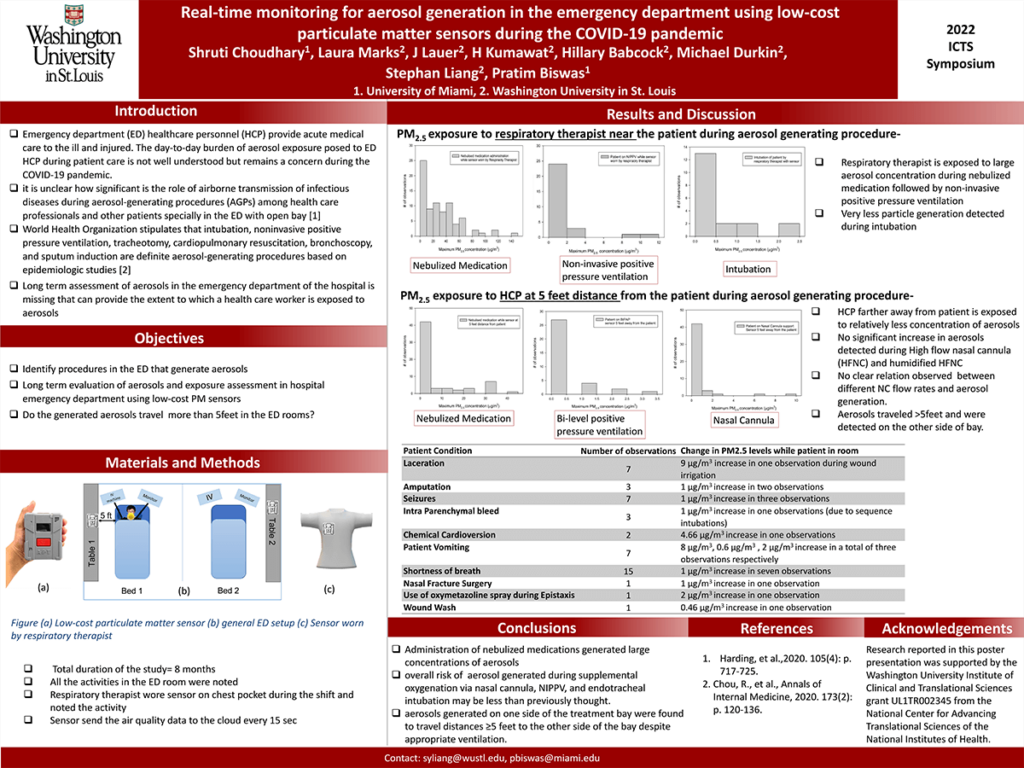Introduction: Emergency department (ED) healthcare personnel (HCP) provide acute medical care to the ill and injured. The day-to-day burden of aerosol exposure posed to ED HCP during patient care is not well understood, but remains a concern during the COVID-19 pandemic.
Methods: Baseline air quality and aerosol characterization during routine ED patient care and emergent aerosol-generating procedures (AGP) were performed over an 8-month period in the ED trauma/critical care area. This area is comprised of 6 open treatment bays with no doors, each accommodating 2 patient beds separated by a curtain. Particle concentrations were measured in real-time using a network of low-cost particulate matter (PM) sensors. The APT MINIMA PM sensor estimates concentrations of particles (PM 10, PM 2.5, PM 1.0) capable of depositing in the alveolar region of the human lung. One sensor was placed within 3 ft of the head of each patient bed in the treatment bay; a sensor was also worn by a respiratory therapist during AGPs to determine personal exposure. Particle mass concentrations for the following AGPs were determined: administration of nebulized medication, supplemental oxygenation via nasal cannula, non-invasive positive pressure ventilation (NIPPV), and endotracheal intubation.
Results: Distribution of mass concentration during different AGPs followed a Poisson distribution. Administration of nebulized medications generated large concentrations of aerosols compared to endotracheal intubation, NIPPV, or supplemental oxygenation via nasal cannula. However, aerosols generated on one side of the treatment bay were found to travel distances ≥5 feet to the other side of the bay despite appropriate ventilation.
Impact: Aerosol generation during ED patient care was greatest with administration of nebulized medication. While ED HCP should continue to don appropriate respiratory personal protective equipment when performing AGPs, overall risk of generating aerosol during supplemental oxygenation via nasal cannula, NIPPV, and endotracheal intubation may be less than previously thought.
Organization – Washington University in St. Louis
Choudhary S, Marks L, Lauer J, Kumawat H, Babcock Hi, Durkin Mi, Liang SY, Biswas P
